What is Transistor Biasing:
Transistor Biasing is the process of setting a transistors DC operating voltage or current conditions to the correct level so that any AC input signal can be amplified correctly by the transistor.
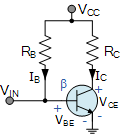
Transistor Biasing:
Establishing the correct operating point requires the proper selection of bias resistors and load resistors to provide the appropriate input current and collector voltage conditions. The correct biasing point for a bipolar transistor, either NPN or PNP, generally lies somewhere between the two extremes of operation with respect to it being either “fully-ON” or “fully-OFF” along its load line. This central operating point is called the “Quiescent Operating Point”, or Q-point for short.
When a bipolar transistor is biased so that the Q-point is near the middle of its operating range, that is approximately halfway between cut-off and saturation, it is said to be operating as a Class-A amplifier. This mode of operation allows the output current to increase and decrease around the amplifiers Q-point without distortion as the input signal swings through a complete cycle. In other words, the output current flows for the full 360o of the input cycle.
So how do we set this Q-point biasing of a transistor? – The correct biasing of the transistor is achieved using a process know commonly as Base Bias.
The function of the “DC Bias level” or “no input signal level” is to correctly set the transistors Q-point by setting its Collector current ( IC ) to a constant and steady state value without an input signal applied to the transistors Base.
Since the transistors Base bias currents are steady-state DC currents, the appropriate use of coupling and bypass capacitors will help block bias current setup for one transistor stage affecting the bias conditions of the next.
Base bias networks can be used for Common-base (CB), common-collector (CC) or common-emitter (CE) transistor configurations. In this simple transistor biasing tutorial we will look at the different biasing arrangements available for a Common Emitter Amplifier.
Base Biasing a Common Emitter Amplifier:
One of the most frequently used biasing circuits for a transistor circuit is with the self-bias of the emitter-bias circuit where one or more biasing resistors are used to set up the initial DC values of transistor currents, ( IB ), ( IC ) and ( IE ).
Fixed Base Biasing a Transistor:
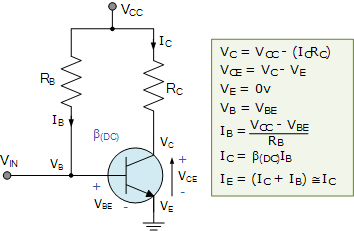
The circuit shown is called as a “fixed base bias circuit”, because the transistors base current, IB remains constant for given values of Vcc, and therefore the transistors operating point must also remain fixed. This two resistor biasing network is used to establish the initial operating region of the transistor using a fixed current bias.
Collector Feedback Biasing a Transistor:
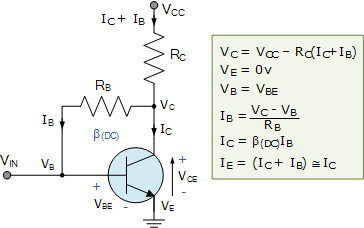
This self biasing collector feedback configuration is another beta dependent biasing method that requires only two resistors to provide the necessary DC bias for the transistor. The collector to base feedback configuration ensures that the transistor is always biased in the active region regardless of the value of Beta (β) as the DC base bias voltage is derived from the collector voltage, VC providing good stability.
Dual Feedback Transistor Biasing:
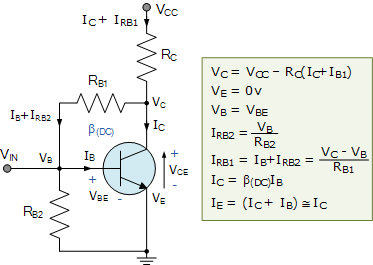
Adding an additional resistor to the base bias network of the previous configuration improves stability even more with respect to variations in Beta, ( β ) by increasing the current flowing through the base bias resistors.
Transistor Biasing with Emitter Feedback:
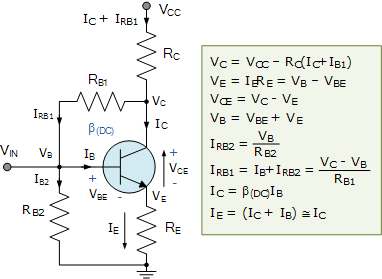
This type of transistor biasing configuration, often called self-emitter biasing, uses both emitter and collector-base feedback to stabilize the collector current even more as resistors RB and RE as well as the emitter-base junction of the transistor are all effectively connected in series with the supply voltage, VCC.
Voltage Divider Transistor Biasing:
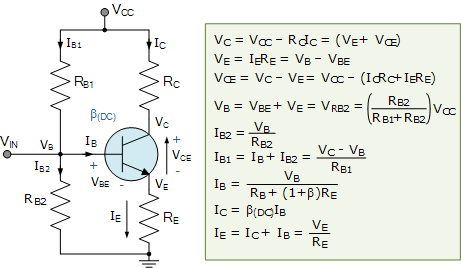
The common emitter transistor is biased using a voltage divider network to increase stability. The name of this biasing configuration comes from the fact that the two resistors RB1 and RB2 form a voltage or potential divider network with their center point connecting the transistors base terminal directly across the supply.
